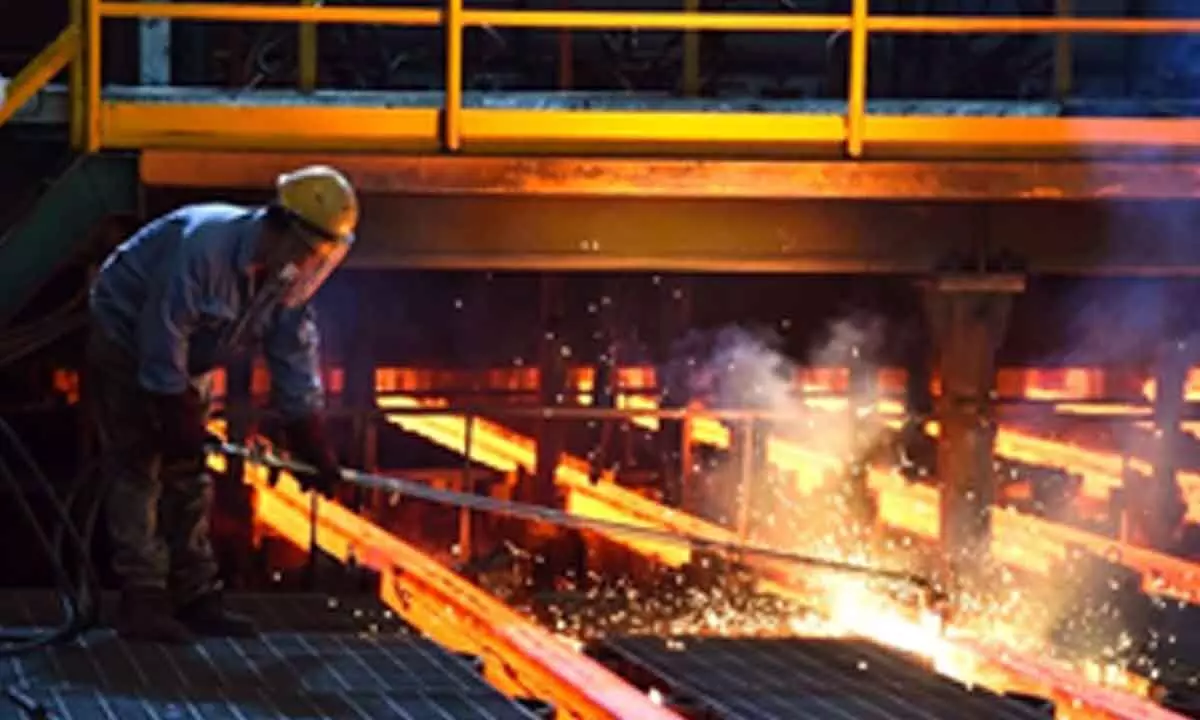Live
- 5th in a row: Nehru Zoo Park gets ISO 9001 certification
- Farmers throw marigold flowers on road due to drop in price
- Which one will you prefer caste census or skill census?
- NHRC takes cognizance of Lagacharla incident
- Telangana Cabinet expansion likely after Maha results
- Centre developed CFSL with int’l standards: Bandi Sanjay
- SVU embarks on promoting drone, space technologies
- HMWSSB MD inspects Mehdipatnam, Langar Houz
- Aging vehicles aggravate Hyderabad’s air pollution woes
- Paddy procurement made easy in AP
Just In

The Steel Authority of India Limited (SAIL) on Monday announced a collaboration with leading global resources company BHP to accelerate steelmaking decarbonisation in the country.
New Delhi : The Steel Authority of India Limited (SAIL) on Monday announced a collaboration with leading global resources company BHP to accelerate steelmaking decarbonisation in the country.
SAIL, the largest government-owned steel producer in India, said the move is an important step for them in promoting lower carbon steelmaking technology pathways for the blast furnace (BF) route in the country.
Amarendu Prakash, Chairman of SAIL, said the emergent need to align the steel sector with climate commitments is non-negotiable.
“SAIL is committed to contributing towards tackling the issue of climate change through fostering an innovative future for the steel industry in India,” said Prakash.
Both the companies are exploring a number of workstreams supporting the potential decarbonisation at SAIL’s integrated steel plants which operate blast furnaces (BF), with an initial study to assess various strategies to reduce greenhouse gas emissions (GHG).
These workstreams will consider the role of alternate reductants for the BF such as hydrogen and biochar use, with a view to also building local research and development capability to support the decarbonisation transition.
“We recognise that decarbonising this industry is a challenge that we cannot meet alone, and we must come together to leverage shared expertise and resources, to support the development of technologies and capability that could have the potential to create a real change in carbon emissions both now and in the longer term,” explained Rag Udd, BHP’s Chief Commercial Officer.
According to a recent report by the Institute for Energy Economics and Financial Analysis, India’s steel sector accounts for about 12 per cent of its carbon dioxide (CO2) emissions.
The report mentioned that there are multiple ways that could help in the transition from traditional methods to low emission intensity technology like green hydrogen, renewable energy, carbon capture, usage and storage technology with blast furnace (BF)/basic oxygen furnace (BOF) or direct reduced iron (DRI)-electric arc furnace (EAF) and scrap-based Electric arc furnace (EAF).

© 2024 Hyderabad Media House Limited/The Hans India. All rights reserved. Powered by hocalwire.com






